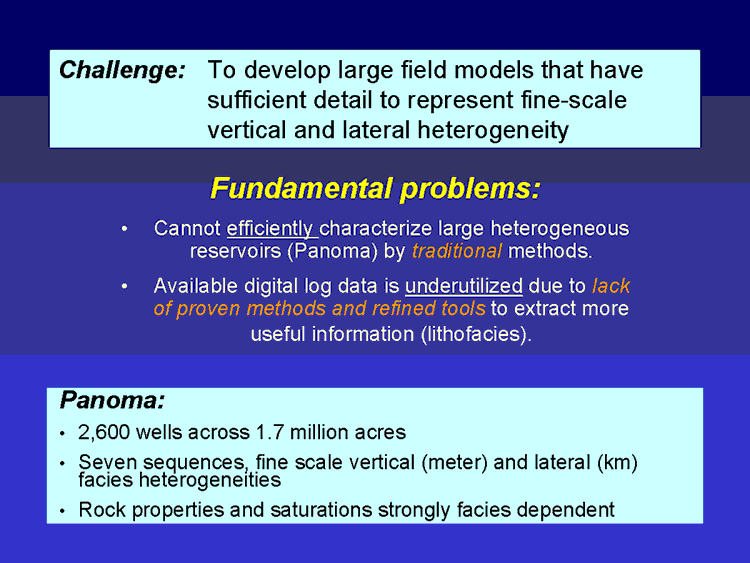 |
|
Kansas Geological Survey Open-file Report 2003-68 |

One challenge we face today in producing the last mcf or barrel of oil from our domestic reservoirs is to develop large field models that have sufficient detail to represent fine-scale vertical and lateral heterogeneity.
Fundamentally, it is not possible to efficiently characterize large heterogeneous reservoirs like the Panoma by traditional methods. If we had unlimited amount of time we could painstakingly work our way through a paper log data set, making core to log lithofacies correlations and eventually constructing a model. That approach would not take full advantage of the data and tools available in today’s digital world and is not practical. The main obstacle to extracting useful geologic (lithofacies) data from digital log data is the lack of proven methods and refined tools to do the job. The data are available (digital well logs), the basic tools are available (neural networks and other artificial intelligence tools), but the data and tools need to converge. We feel that we have been able to do just that and efficiently predict lithofacies in the complex Panoma reservoir system by mining a massive digital data set.
This would not be necessary for the Panoma if rock properties and fluid saturations were not so strongly lithofacies-dependent.
e-mail : webadmin@kgs.ku.edu
Last updated January 2004
http://www.kgs.ku.edu/PRS/publication/2003/ofr2003-68/slide3.html